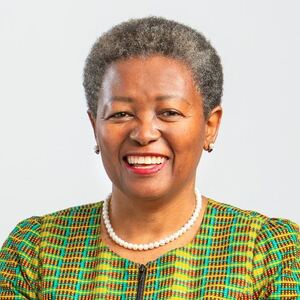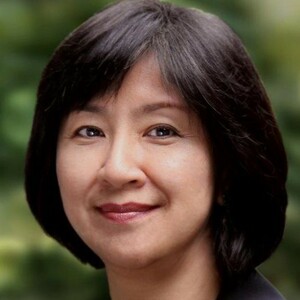Gender equality and women’s participation in the workforce – (still!) a work in progress : Extracts from the AltoPartners International Women’s Day Report
As might be expected, progress towards gender equality across regions is mixed. Yet one theme emerged again and again in our survey of AltoPartners experts: much more can and should be done to advance women’s participation in the formal economy. Coming out of the post-COVID “she-cession”, a term coined to acknowledge the disproportional financial impact of the pandemic on women in the workplace, achieving economic parity is key to future growth and prosperity for all. Many have yet to return to the formal economy. According to The Washington Post, the first year of the coronavirus pandemic saw 54 million women around the world knocked out of work, and of the women who lost jobs in 2020, almost 90% exited the workforce completely, compared to around 70% of men.
Listening to our partners, it’s clear that just because a country has a high percentage of women in the workforce, that is no guarantee of financial or social parity. Bottom line: more women in the workplace does not translate into more women in senior leadership positions. Only once we address this issue, can we begin to unlock the gender dividend. Statistics on women in the workplace also deflect from widespread occupational segregation, with women generally being employed in less well-paid care roles, compared to men who dominate high-paying jobs in STEM careers.
Argentina
In 1947 Argentina granted women the right to vote, and legalised female representation in government. According to the Borgen Project, the country has the second-highest rate of female leadership in South America and ranks 17th highest in the world, ahead of countries such as Belgium and the Netherlands. This however is not mirrored in the workforce. In 2022, only half of the adult Argentinian women were economically active while employment rates for men have remained largely stable at 74-75%. In 2023, Argentina scored 0.64 in the gender gap index and a score of 0.6% for wage equality which puts women in work at a 36% economic disadvantage compared to men. There are government quotas in place, especially for companies that quote on the local stock exchange, but these are not widely implemented. A study by KPMG highlighted the fact that the diversity agenda is more theoretical than real. Of the total of 6,248 directors (regular and alternate) sitting on boards of the 1,000 companies in the survey, 5,248 are men and only 1,000 are women. That is a total of 16%. Board chairperson slots (called presidents in Argentina) are occupied by men in 93.5% of the cases surveyed. Of the 1,000 companies polled, 472 did not have any women on their boards.
Colombia
In 2010, Colombia became the first country in the world to formally acknowledge women’s unpaid labour contribution to the economy via their roles as homemakers and caretakers of a family. The groundbreaking legislation (Law 1413 of 2010) mandated time-use surveys to account for the care economy and the invisible contribution of women, for inclusion in their national accounts. In 2017, according to the ILO, women’s unpaid labour contributed to 20% of the country’s GDP. However, while the law is meant to provide data to impact and inform public policy, it stops short of legislating tangible recognition for women’s unpaid labour. The one-sided journal entry therefore still leaves women in a significantly disadvantaged position against their male counterparts in real terms. For those who are participating in the formal economy, the gender gap means that women are 34% less likely to get equal economic participation and opportunities than men. While companies are striving to balance their workforce, including hiring more women in managerial positions and boards, and setting policies that benefit and make work-life balance more appealing to women, there is still work to be done to ensure equal opportunities and representation for women in various sectors.
Mexico
While legislation insists that 50% of seats in Congress must be occupied by women, there are no quotas in the private sector. In that sector, women are hired at the entry level at nearly the same rate as men (40%), but their attrition rate is significantly higher and their presence in leadership levels declines to 10% at the C-Level and 2% at the CEO level. This is something Mexico is actively determined to change. According to a 2022 McKinsey study, Uneven Parity: Women Matter Mexico 2022, “perceptions have changed over the past four years. Today, 80% of surveyed employees (men and women) describe their organisations as being committed to gender diversity, versus 68% in 2017… Additionally, employees appreciate greater clarity on the economic benefits of driving diversity. In 2017, only 28% of employees linked diversity to improved business performance. Today, 38% recognise the importance of the relationship between diversity and successful business performance.” But, cautions Hardy, these results come mainly from multinational companies. “If we take into account local Mexican companies, which hire the bulk of the Mexican workforce, the situation is much more adversarial for women, as these local companies are not subject to global directives from headquarters on advancing women to leadership positions”.
United States
According to the US Bureau of Labor Statistics, the workforce participation rate for women is 57.4%, which is 10.6 percentage points lower than for men. The United States, which does not use quotas to specify gender for boards or executives, has made progress in promoting gender equality in business, with increasing representation of women in leadership roles, efforts to close the gender pay gap, and initiatives to support women entrepreneurs. However, challenges remain, including disparities in representation at senior management levels and persistent gender wage gaps. The biggest gains for women in leadership have been in government, politics, academia, and at board level – gains which are not reflected in the leadership of Fortune 500 companies. According to 2023 data released by Washington-based non-partisan think tank, Pew Research Center, women made up just over 10% of CEOs in Fortune 500 companies, while the percentage of women who sit on the boards of those companies is 30.4%, which is on a par with the percentage of women who head up colleges and universities (32.8%). Despite some important gains in political leadership and government roles, there is a sense that the status quo is not working and that more needs to be done specifically on gender parity as a means to strengthen communities, economies and workplaces.
Austria
The 2017 Women’s Quota for Supervisory Boards Act mandates a minimum of 30% representation for each gender in supervisory boards of listed companies and large corporations with more than 1,000 employees. According to the Statistics Austria’s Labour Force Survey of 2022, 70% of women (aged 16-64) participate in the workforce, compared with 87% of men in the same bracket. This could be mistaken for equitable participation in the formal employment economy. On closer analysis, however, it’s found that 50% of those women are only part-time or “atypically” employed (meaning not in formal employment on a full-time basis), against 82% of men. And 6.1% of those 87% of men occupy leadership positions while only 3.2% of those 70% of women do the same. In 2022 on International Women’s Day, Statistics Austria announced that while the gender pay gap had decreased from 23.5% to 18.8% between 2011 and 2021, it’s still among the countries with the highest gender-related wage differences – and above the European average of 12.7%. This gap escalates significantly as women get older, with differences in working life also reflected in pensions. In total, lower incomes and gaps in insurance cover (mainly due to child-rearing) lead to a gender-specific pension gap of 41.6% – which means that women not only earn less when they do work, but they also have fewer opportunities to accumulate wealth over their working lives to secure their retirements at equal lifestyle levels to their male counterparts.
Denmark
Even in Denmark, acknowledged as a world leader in gender equality (it ranks top of the World Economic Forum’s Gender Inequality Index), the gender pay gap has proved difficult to close and women are still underrepresented in certain industries and top executive roles. While the rate of workplace participation is roughly equal (65% for women, and 71.3% for men), the country’s official website points out that the workforce remains one of the world’s most segregated, with women more likely to work in the public sector or hands-on care positions, while men tend to pursue careers in STEM. Danish men are still earning 12.7 % more than women, and while 85% of that can be attributed to the segregated career market, 15% of that pay gap is still unexplained. The country has no gender-related quotas and relies on voluntary measures.
Germany
Female labour force participation in 2020 was approximately 7 percentage points lower than that of men, which is still a three-fold improvement in gender disparity in the early 1990s. There are approximately 3.8 million SMMEs in Germany, of which 16% are founded and managed by women. However, 40% of these female entrepreneurs run their businesses as a sideline. A recent survey by Women in Business found that women are still less trusted to start a business, indicating that societal attitudes hamper women’s ability to compete equally in the entrepreneurial space. At board level, the country implemented a quota system in 2015 for supervisory boards of publicly listed and co-determined companies, whereby these companies must ensure a minimum of 30% female representation on their supervisory boards. However, there is no general quota for executive boards or other leadership levels in German companies.
Poland
In 2024, for the first time, the number of working Polish women in the 15 to 89 age group will exceed the non-working population. Gains in leadership roles though, have typically been at the political level. Almost 30% of MPs are now female, up from 20% two decades ago and 10% in 1991, although, Klajda says, many consider this a cynical ploy to appeal to voters, rather than proof of any real shift in attitudes, especially since they don’t receive the same PR, financial or media expenditure as male candidates. While Polish women excel as entrepreneurs (Poland boasts the second-highest number of female entrepreneurs in Europe, after Russia), women account for only 8% of all start-ups.
Switzerland
Even though “equal pay for equal work” has been enshrined in the Federal Constitution of Switzerland since 1981, a 2022 PwC Women in Work Index shows that the gender pay gap of 17% in Switzerland is 3% higher than the OECD average, hypothetically taking women 63 years longer at work than men to close the gap! Despite efforts to close the gender pay gap and increase female representation in leadership roles, challenges remain. Notable progress can be seen in the public sector and in companies that have embraced diversity as a core value, but there’s consensus that more needs to be done to achieve full equality. Despite women making up 53% of all graduates, when they become mothers, they generally seek part-time work: women are employed part-time at a rate of 60% and men at 14% as soon as a couple has children. In 2020, the Swiss parliament passed a law encouraging companies to boost the number of women in top positions. However, it stopped short of imposing strict quotas.
The Czech Republic
With an almost equal 52.3% female participation in the Czech workforce vs 68.3% of men (in 2022), the Czech Republic has one of the highest gender pay gaps in Europe at a rate of 19%, according to Eurostat data. The country is however working on draft legislation to bring it into line with the new EU pay gap disclosure directive for the private sector. This is being met with heated resistance, with companies concerned about creating tensions in the workplace. During COVID-19, when global lockdowns required homeschool supervision and full-time care for children, it was estimated that women in the Czech Republic carried 58% of the childcare burden compared to 11% of men, more than any other EU member state.
*Australia
Australia enjoys a rate of 62.2% of women in the workforce, compared to 71.2% of men. In October 2022, the government allocated an investment of A$4.5 billion to childcare in a bid to improve female participation in the labour force. While the country has a (comparatively) healthy rate of female participation on the surface, a look beneath reveals a significant level of female underemployment. Women constitute only 38.4% of the full-time workforce and make up 68.5% of the casual and part-time workforce. Labour protections and opportunities in that segment of the market are considerably less than full-time or permanent employment, leaving women more vulnerable not only to a lack of career progression opportunities but also to job insecurity. They are also disproportionately impacted by shifts in the local and global economy. The country has moved to set targets and to ask boards to comment on progress against these and the percentages of male, female, or other genders at each level within the company, opting for a system of self-disclosure that encourages organisations to ask “If not, why not?”
India
Less than 25% of the Indian workforce is female and the contribution of women to India’s GDP is just 18%, one of the lowest proportions in the world, according to the World Economic Forum. An Indian government press release in September 2023 puts female labour force participation at 37%. A 2023 study from the Bangalore-based Azim Premji University attributed the gains to a rise in women’s selfemployment, probably driven by distress rather than economic growth, Reuters reports. Either way, it’s clear that women face many economic and social obstacles in the country. Patel says a limited female talent pool and the old-boy network contribute to the problem, but decision-makers’ commitment to the cause of gender equality is key. “Most of all we need to change mindsets – not just about women’s roles in the workplace but also men’s roles at home.”
Malaysia
According to the World Bank Labour Portal, the labour force participation rate among women is 52.7% and 78.7% for men (2022). Interestingly, however, Malaysian firms are more likely to have a female top manager than firms in upper-middle-income countries, perhaps because the country imposed a 30% quota in 2011 for women decision-makers in the corporate sector. A recent firm-level survey by World Bank’s Enterprise Surveys found that about a quarter of all Malaysian firms have a female top manager, although they are more likely to be found in large firms than in small firms, in the retail sector vs. the rest of the economy, and in exporting than in non-exporting firms. This is despite literature that shows that women top managers have higher levels of labour productivity on average compared to men in the same role. However, the regulatory environment, corruption and crime conspire to make it much harder for firms with female top managers to operate efficiently.
Singapore
In 2022, participation of women in the workforce stood at 63.4%. This places Singapore behind countries in the Asia-Pacific region like Vietnam and New Zealand. A concerning paradox is that while women in Singapore dominate in mathematical and science courses at universities, very few enter the same field after graduation. According to government statistics in the country, half of scientific, technical, engineering and maths-educated women work in non-related occupations. A UNESCO study suggests that a key factor in this is lack of confidence, which stems from gender stereotypes in a woman’s social network and in society, that find their way into the classroom. Georgette Tan, president of United Women Singapore, a non-profit organisation devoted to gender equality, says: “Girls tell us that at home, they get less encouragement from their parents than their male siblings to take up STEM jobs. Some parents still think STEM jobs aren’t feminine. The cultural overhang is still there.”
South Africa
According to the Quarterly Labour Force Survey by Statistics SA for the second quarter of 2023, the labour force participation rate for women stood at 54.3% compared with 64.9% for men, a gap of 10,6 percentage points. A complicating factor, however, is South Africa’s youth (15-24 years) unemployment rate, which hovers dangerously close to 60%. It reached an all-time high of 66% in the third quarter of 2021 and dropped down again to 59% post-COVID. This includes 13% of tertiary qualified graduates who find no work after studying. This disproportionately affects women in South Africa, where, according to Statistics SA, women are more likely to remain unemployed for longer periods, which eventually affects their chances of ever being employed in the future. The incidence of long-term unemployment among women has consistently been higher than the national average. There are no specific quotas for women in business. However, gender is a key component in determining an organisation’s Black Economic Empowerment rating, which is the strategy adopted by the South African government in 2003 to advance economic transformation and enhance the economic participation of black people in the South African economy.
Read the full International Women’s Day Report here
With contributions and leading insights from Sonal Agrawal; Joo-Lee Aw; Anne Borgen; Andrea Brand; Julie Garland-McLellan; Regina Graf; Karen Greenbaum; Claudia Hardy; Corinne Klajda; Jana Martinová; Mpho Nkeli; Sandra Olive; Toral Patel; Lauren E. Smith; Maria Isabel Ventura; and Julia Zdrahal-Urbanek

Sonal Agrawal
Managing Partner AltoPartners Bangalore, AltoPartners Delhi+NCR, AltoPartners Kolkata, AltoPartners Mumbai
Anne Borgen
Partner AltoPartners Copenhagen
Corinne Klajda
CEO, President of the Board AltoPartners Warsaw
Mpho Nkeli
Executive Chairman & Head: Board Practice AltoPartners Johannesburg
Sandra Olive
Managing Partner AltoPartners Buenos Aires
Toral Patel
Managing Partner AltoPartners Mumbai
Lauren E. Smith
Co Practice Leader, Board AltoPartners Miami





